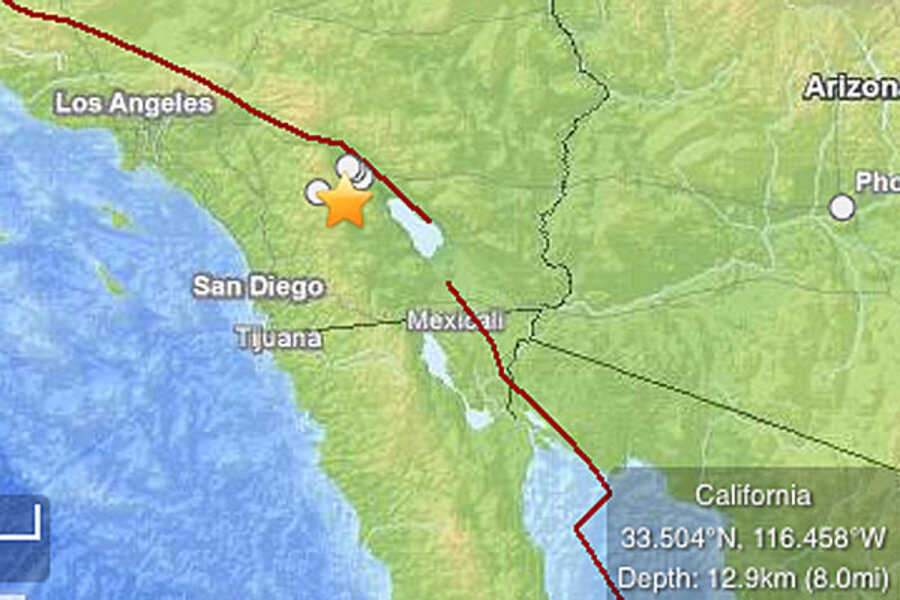4.7 California earthquake rattles but no fatalities
Loading...
| Indian Wells, Calif.
A modest but widely felt earthquake rolled through a wide swath of Southern California late Monday morning but there were no immediate reports of damage.
The 9:55 a.m. quake had an estimated magnitude of 4.7, said Nick Scheckel, seismic analyst at the California Institute of Technology's seismological laboratory in Pasadena. He said a number of aftershocks were occurring.
The epicenter was about a dozen miles from the Riverside County desert community of Anza, about 100 miles southeast of Los Angeles.
The temblor, which occurred at a depth of eight miles, was felt sharply in the local area and caused a swaying or rolling motion in Los Angeles and San Diego as well as in Orange and San Bernardino counties.
Susie Bride, a cashier at Cahuilla Mountain Market and Cafe in Anza, said the quake seemed to last awhile but didn't do any damage to the business.
"It kind of shook and then I thought, 'God, is that an earthquake?' It kind of shook and then it rolled a little bit and then it shook again," she said.
About 25 miles north of Anza, Palms Springs police Sgt. Harvey Reed said his department received no reports of damage or injuries. There were no other immediate reports of damage in the region.
Earthquakes of such magnitude are unlikely to do much harm in regions with modern building standards.
"It's extremely unlikely that there's damage from this earthquake," said Lucy Jones, a seismologist with the U.S. Geological Survey in Pasadena.
Jones said there would be strong shaking directly on top of the epicenter but not much farther away.
"At most, there might be some places where things were thrown off shelves, but that might be the extent of the damage," she said.
The temblor was a strike-slip earthquake on the San Jacinto Fault, the most active fault in Southern California, Jones said.
"It has historically the largest number of damaging earthquakes in the 20th century," Jones said.
In the past two decades there have been five quakes of magnitude 4.7 or greater, she said, and in the 20th century there were eight quakes of magnitude 6 and above.
Rachelle Siefken was at home in the Riverside County town of Aguanga with her 4-year-old daughter and 16-month-old son when the shaking started. It was the first earthquake experience for both children, and her son was scared, she said, although the temblor did no damage to her house.
"I grabbed him up in my arms and I stood in the doorway with him," said Siefken, who teaches English online for the California Virtual Academy.
___
AP writers Tami Abdollah, Sue Manning, Greg Risling, Justin Pritchard, Robert Jablon and John Antczak contributed to this report from Los Angeles. Gillian Flaccus reported from Orange County.
Copyright 2013 The Associated Press.







